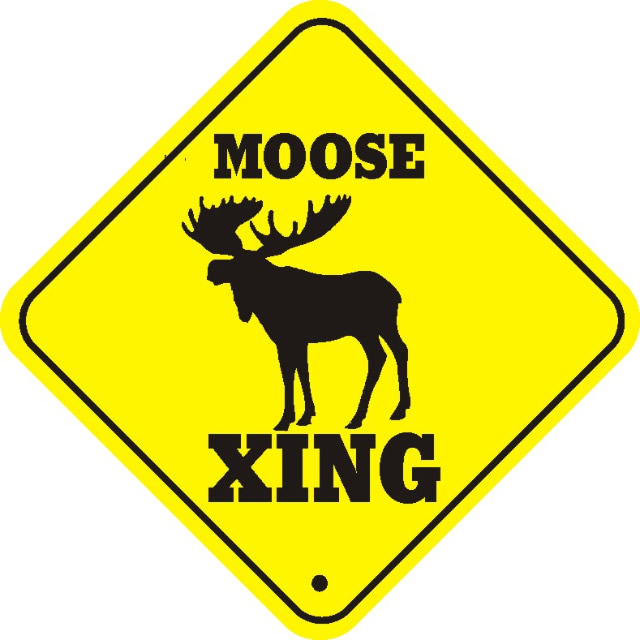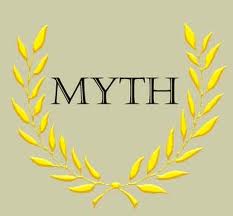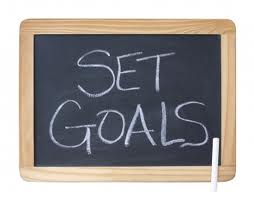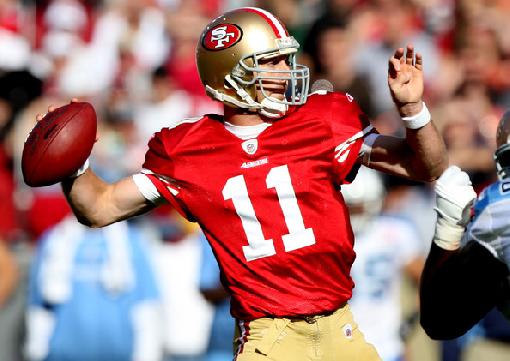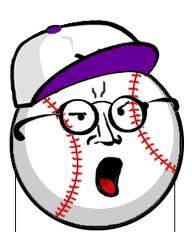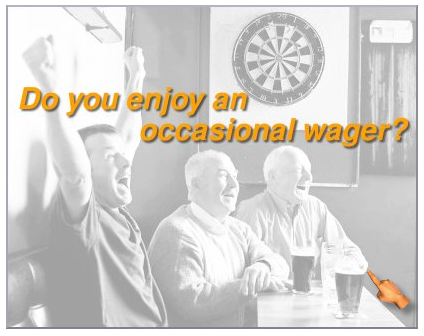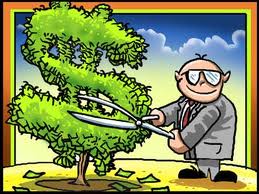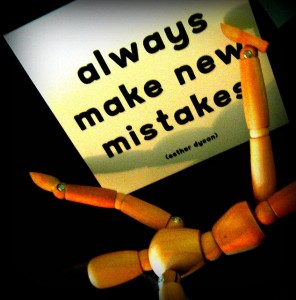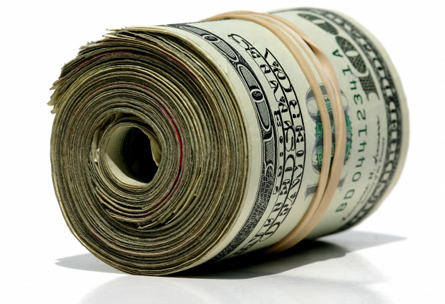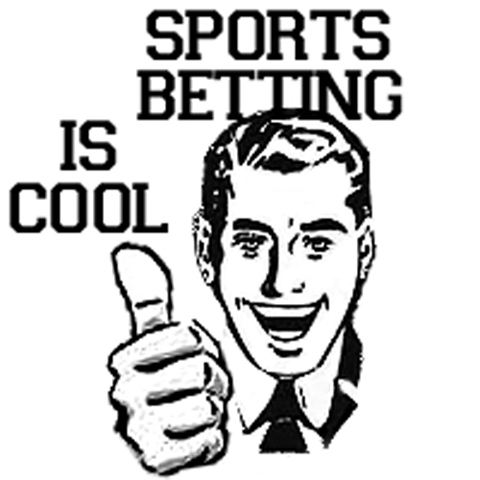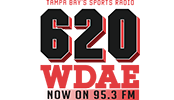Everyone that bets sports, no matter the level of expertise, feels the sting of a bad beat from time to time. Around here, we like to call them moosers because of a term that had its origin in the glory day of the covers.com posting forum. During football we’ll bring back the weekly moose report but for now we’d like you to share your best stories by emailing us at todd@toddstake.com. Next week we’ll post the best submissions for everyone to read and iff you can find video, definitely include that as well. If we can’t laugh at our own misfortune, well then we’re taking sports betting way too...
Myth: Power Ratings = Pointspreads...
posted by Todd
Power ratings are just one of many tools that bookmakers use to determine point spreads. Let me repeat that; they’re just GUIDES bookmakers use to determine point spreads and should never be confused with the actual point spreads themselves. Everyone in the business has his (or her) own opinion and more often than not we don’t value every team across all sports the exact same way. To quote Shakespeare if he were a bookmaker, therein lies the rub…when it comes to establishing openers. Books don’t operate in a vacuum in the age of the internet and too much deviation from the market price as a linemaker creates arbitrage for sharper bettors. Suffice to say it explains why no matter how different a line may be when it first hits the market, it will eventually gravitate towards the same price point whether the shop is located in London, Las Vegas, or Reno. However, the true skill displayed by the sharpest bookmakers is understanding how to utilize the variance between what the market says a line should be and true power number to steer the action to a position of strength. For example, if power numbers indicate a line should be 3 points different than the market, you can’t ignore everyone else and hang a 6 when the world’s at a 3. Instead, the objective is to shade the price just enough (say 3, -125 in football) realizing that any sharp bettor who shares the same power numbers or thought process on a game as you will be discouraged from betting the “correct side” at your shop. The reality is if you hang a vastly different number, you stop being a bookmaker and become a gambler. By remaining stubborn and putting your stake in the ground and ignoring...
Setting Realistic Goals...
posted by Todd
Written by Andrew Choe (@choe20) I was sitting outside with a few of my friends who happen to be very knowledgeable and successful working in the stock market. They listened to me vent about the bad streak I was going through betting bases which saw my ROI drop from 78% to 17%. We started talking about the correlation between sports betting and the stock market – comparing yearly return on investments as the main similarity between the two. I then brought up the question, “What yearly return on investment would you be happy with, in order to walk away satisfied every year?”. My friends both answered firmly, “20 percent.” I asked why and both merely said “Look at it this way, I double my investments in five years. Fives years!” In my head I started relating it to sports and thinking to myself how easy 20% was for me to reach and surpass. At that point, all of a sudden everything clicked: What if you set realistic goals on your desired returns at the end of each season using previous data from your handicapping history to figure out an attainable percentage (note: this requires strong record keeping so you understand exactly where your strengths and weaknesses are, not just a 1 year sample size) For someone like me, I prefer to play across the board in almost every major sport (MLB, NCAAB, NHL, NBA, NFL, and NCAAF). Many good handicappers go through hot streaks, with most of their profit margin occurring early in the season. Inevitably, what everyone will faces at some point is regression. No matter how good of a handicapper you are, with every hot streak is a cold streak waiting right around the corner. A good strategy is back tracking your...
Regression to the Mean: NFL Turnover Margin...
posted by Todd
Written by @JustinZovas “Team A has got to take care of the football this week,” words every NFL fan will hear 1,047,683 times during the 2012 season. Turnover margin, the net difference between turnovers gained and turnovers lost , is a crucial factor in determining the outcome of a football game. Reasoning behind this is simple; in order to score (for most teams), you need the ball and turnovers lead to a change of possesion. End result? Turnover margins serve as a good reflection of a team’s success not only in terms of wins and losses but also how many games they’ll cover. For example, the Green Bay Packer’s turnover margin last season was +24 and the Packers ended the regular season 15-1 SU and 11-5 ATS. Conversely, the Washington Redskins struggled to hang onto the ball finishing 5-11 SU and 6-9-1 ATS because of a -14 turnover margin (aka the Rex Grossman effect). Empirical data confirms the theory that turnover margins fluctuate from year to year and a team’s average turnover margin over the course of multiple seasons should end up close to zero. However, just like any other long term trend, there are random variances from year to year. Extremely high or low TO margins one season are typically followed by a massive regression to the mean the following year. As a byproduct of abnormally high (or low) turnover margins, significant changes from one year to the next create unrealistic expectations for teams. A team that experiences a dramatic improvement in turnover margin will their point spread inflate, reflecting an over valued side. After a season where a team benefits from fortuitous bounces, there will be a correction so we welcome the 2011 San Francisco 49ers into our 2012 equation. You’ll notice during the 9...
The joy of the chase
posted by Todd
Written by Andrew Choe (follow him on twitter @choe20) Many of us have fallen victim of going through forums and locating threads on “systems” that are guaranteed to turn a substantial profit without any work involved. The majority (if not all of them) of them never work and if they do their success is fleeting, creating short-term profit that eventually subsides. However, I have always found systems intriguing as a betting concept, not because I’m a lazy gambler and looking to make a quick buck, but rather because I enjoy the different perspectives, angles, and patterns that go into creating a system. This article has no intentions of trying to persuade you to give in to testing this system or bet it with your own bankroll instead it’s written to better illustrate and explain how a system can work as a guideline on top of handicapping and filtering to create long-term success. I stumbled on a system for MLB in a posting forum called “The RPI Chase”, created by user ‘bettor2win’. The premise is simple in that you bet a team to avoid a sweep in a series based on the outcome of the RPI (Relative Power Index). Because the goal is to get just one win, you keep chasing the losses on top of what you wagered originally to turn a unit profit. RPI (relative power index) is a mathematical formula derived from Bill James’ Pythagorean theorem of baseball. The formula was designed to relate a team’s runs scored and runs allowed to its win-loss record. The RPI Chase System: 1. If any team is the visiting team and has an RPI of over 50 points or more over the home team they are playing, take the visiting team for a series chase....
Take it to the Limit
posted by Todd
Every pointspread is not created equally. A bookmaker’s confidence level varies by sport since he has to be willing to take the biggest bets in markets believed to be most efficient for long term profitability. However, efficiency doesn’t imply the numbers are air tight but rather indicates there is enough money being wagered on a game to limit overall liability. No one believes (nor will any bookmaker tell you) that the same amount of time is spent setting nightly NBA props as goes into establishing weekly NFL lines because the market cap isn’t close to the same size. Sharp bettors know they won’t be able to bet enough on props to make it their primary source of revenue so they don’t invest their time in a market that can’t sustain them. Given the 100x increase in volume a sportsbook sees on Browns vs Seahawks compared to O/U Kevin Durant made FG’s, we’d be crazy not to allocate our focus primarily to the NFL game in this example. Like any successful business, the majority of time is dedicated towards the most profitable pursuits, allowing us to create tighter markets where comfort levels increase with larger bet size. To understand the relative strength of a betting line from a bookmaker’s perspective, bettors need to look no further than the limits being offered to them on a particular event. Among the 4 major sports, pro football provides gamblers the greatest opportunity for large wagers because the market size for a single game is far superior to any other sport. As a result of more money being wagered on a sporting event (think Superbowl), it means each big bet that enters the pool creates a smaller ripple than a 10k bet would on a WNBA side when handle...
Art of Hedging
posted by Todd
Hedging Sports Wagers, The GambLou perspective (for more great sports info follow him on twitter @Gamblou ) As discussed plenty in earlier GambLou blogs, we hold a substantial future ticket on the Kings to win the West which has now left us multiple options for profit. We purchase future tickets not necessarily with the intentions of actually cashing them, but rather to give ourselves a chance to lock in a playoff profit in some way, shape, or form. Let’s review our potential options if we’re sitting on a Kings ticket from the beginning of the postseason: Scenario 1: We hold our longshot ticket at 11-1 and allow the Kings to finish their work, win the conference, and move to the Stanley Cup Finals. Pretty straight forward with dynamic profit potential but also full of risk given our initial wager amount. Scenario 2: Hedge the future wager to insure bottom line profit and eliminate risk altogether. So (the standard $100.00 dollar example) we take the Yote’s in the series to win half of what our future ticket would pay risking $400 to win $600 . If the Yote’s win the series, we bottom line profit $500.00. If the Kings win at the original $100.00 wager for example, the gross win is $1,100.00 with a net profit of $700.00. Uncle Louie’s single point of focus is “Profitable Sports Gaming” not ‘all or nothing wagering’! While many would look at the Kings recent puck prowess and decide to ride the wager, we wouldn’t think of it nor should the seasoned sports investor. We have an opportunity to take a no risk profit of either 5 units or 7 units (we still profit more if the Kings win) in this particular scenario. We are business people here and have...
Reducing Risk by Parlaying for Payouts...
posted by Todd
Courtesy of Peej the Professor (follow him on twitter @Peej___) Whether it’s totals or picking straight up winners, playing staggered parlays can allow you to eliminate heavy juice in any moneyline sport. For this time of year, a methodology like this can easily be applied to both the NHL and MLB to avoid those somewhat dangerous chalky favorites. Sunday provided a great example to illustrate such an opportunity even if the parlay didn’t actually hit. Since we’re in the business of information exchange and building a thought process, here’s how the day would have unfolded: 3:20 pm Los Angeles Kings/ St Louis Blues 5 under -165 7:35 pm New Jersey Devils / Philadelphia Flyers 5.5 under -150 If we like to play both games under 5 and our unit is $1000, we would be risking $3150 to win $2000. If you’re a little more risk averse you could decide to play a two game parlay risking $1000 to win $1676.77. Now because the Kings/Blues game would be completed well before the Devils/Flyers dropped the puck, we had several options. If the first game went over 5, we could then play the 2nd game straight up risking $1500 to win $1000. In the end, we are risking $2500 instead of $3150 and we could break even on our dime units whereas if we split playing each game straight, the juice would make us nearly a half unit loser for the day. Here’s where things get interesting. If the first game comes in under the total, we have a decision to make before puck drops on the nightcap. We can of course leave the 2 team parlay and just risk the $1000 to win $1676.77. However, for turning long term profit there will be plenty of...
Growth Cycle
posted by Todd
by Matthew Ries (follow him on twitter @Matadoor00 ) I failed to see the hype behind another Miami team back on opening night so I wrote this while I waited for my MLB season to kick off when the Texas Rangers opened against the White Sox. My purpose wasn’t to bombard with stats or introduce a new “can’t lose system”, but rather to share a quick recap of my experience in sports betting and get others to reflect before embarking on another exciting 162 game journey (or a bankroll buster for those inexperienced gamblers betting baseball for the first time). Looking back, growth and development of the sports gambler takes on phases very similar to our own life cycle. • Phase 1 – Infancy Many gamblers get started betting games with family, friends, and coworkers. Stakes start with anything from meals, beers, or miniscule amounts most of us won’t miss from our wallets if we lose. During this stage of betting, there’s no record keeping or research since you rely on gut feel and bragging rights to indicate the overall level of success. If you ever ask a gambler in this stage about their track record, they all say they win much more than they lose. As you become more successful in other facets of life and begin growing up, the natural desire is to strive for success in gambling the same way as the rest of life. After all, how tough is it to pick winners when bigger stakes are involved? • Phase 2 – Teens Just like in real life, this era of betting development is filled with the aches, pains, and awkwardness of being a teenager. Here you begin to bet more per game and the volume of games played...
Unbalanced Books
posted by Todd
The term reverse line movement carries a ton of weight among novice handicappers. Bettors throw the phrase around regularly and too frequently use the abstract concept as their primary justification for walking to the window to make a bet. While it’s true that every line move tells a story, each story isn’t the same with every line move. Both gamblers and bookmakers have different motives for their actions and in the biggest games, the net impact of each half point can be worth millions worldwide. Understanding why the line is moving and whose moving it is imperative if you’re going to let it influence your betting behavior. Betting percentages provide a tool for handicappers to gauge how the public is betting a game. This shouldn’t come as profound wisdom but splits should serve as just one component of a well rounded breakdown for each game. When you’re trying to interpret what the data tells you, understand lines move off of the money wagered rather than the sheer number of public bets coming in on a particular side. One of the most important bookmaking principles to understand is that EVERY DOLLAR IN THE SPORTS BETTING MARKETPLACE IS NOT CREATED EQUALLY. When a book is overloaded with public money on a side, bookmakers will still move the line towards side receiving attention from sharps. Regular season games provide a much different illustration of how books move lines when compared with their postseason counterparts inevitably drawing higher betting volumes from increased fan interest. By moving the line towards the sharp side, other professionals looking for the same number are unable to get down at the best of the number. Public bettors are not price sensitive and generally don’t pay attention to the difference in laying -3.5 or...
Seven Signs
posted by Todd
With the opening weekend of the NCAA tournament behind us, a majority of the casual fans will go back to enjoying college basketball from the confines of their neighborhood watering hole or living room. Memories were made and the indelible images of last second victory and excruciating heartbreak become a fabric of the most recent Las Vegas sojourn. After 4 days of living and breathing the gambler’s dream, only a select few can call themselves sportsbook aficionados. Here’s the official checklist to call yourself a true sin city regular (or degnerate) depending on your vocabulary. 1) You know the closest eatery to every sportsbook: Whether you’re at Mirage, Bellagio, or the Wynn, knowing exactly what your gameday meal consists of eliminates one decision from an already stressful day. Most importantly you know how long it takes to order and eat so you can minimize the amount of time lost from watching games. 2) Decisions on where to spend the day watching games are predicated purely on how far the sportsbook is from the parking garage and/or hotel rooms. No one wants a long walk when it’s 7:30 in the morning and your first order of business is to study the boards for that soft pointspread. 3) Like Shakespeare to the soliloquy, you’ve committed to memory the most important piece of information for the day: betting index numbers. The last thing you want is to be the guy in the room who walks up to the window and brings the line to a screeching halt because you don’t remember all 4 legs of your robin. 4) Not only have you come to know the name of each cocktail waitress, you also know her schedule (in a non-stalkerish kind of way). Familial ties exist because you know her kid’s birthday’s,...
Gambling Milestones: Never have I ever…...
posted by Todd
By Brad Niehaus (follow him @SquareCapper) My list is based on gambling experiences as they developed over the years. All of you out there don’t lie or dare mock me because if you’re here reading this post answering yes to any of the following questions, like myself, you have an issue that borders on obsession. (2002) Have you ever bet a friend you could outscore him during each drill in an attempt to spice up high school basketball practice? (Coach thought it was ridiculous to pull up for a 3 while in layup lines but those 5 laps would have been well worth it had the ball gone in.) (2003) Have you ever stayed up all night with your cousin charting out futures on next family member to get pregnant/married/arrested/divorced… with odds? (Interesting note: favorites hit in 3 of the 4 categories.) (2004) Have you ever been in Orlando with a friend, told his parents you were going to play miniature golf, then drove the family van over an hour to an OTB for some horse action? (Purely hypothetical, we stayed at Epcot the whole time) (2005) Have you ever been standing by the road waiting for a ride and started betting on color of the next car to come by? (Odds were based on color and determined after a small sampling.) (2006) Have you ever brought a pocket size television to Christmas Eve mass to watch a football game? (You’re welcome Broncos fans. I think the good lord’s payback to me was the Bengals fumbling the snap on the extra point.) (2008-Current) Have you ever created, developed, marketed, and grown a sports book for your fantasy football league? Even I drew the line trying to book win totals for the league because certain...

